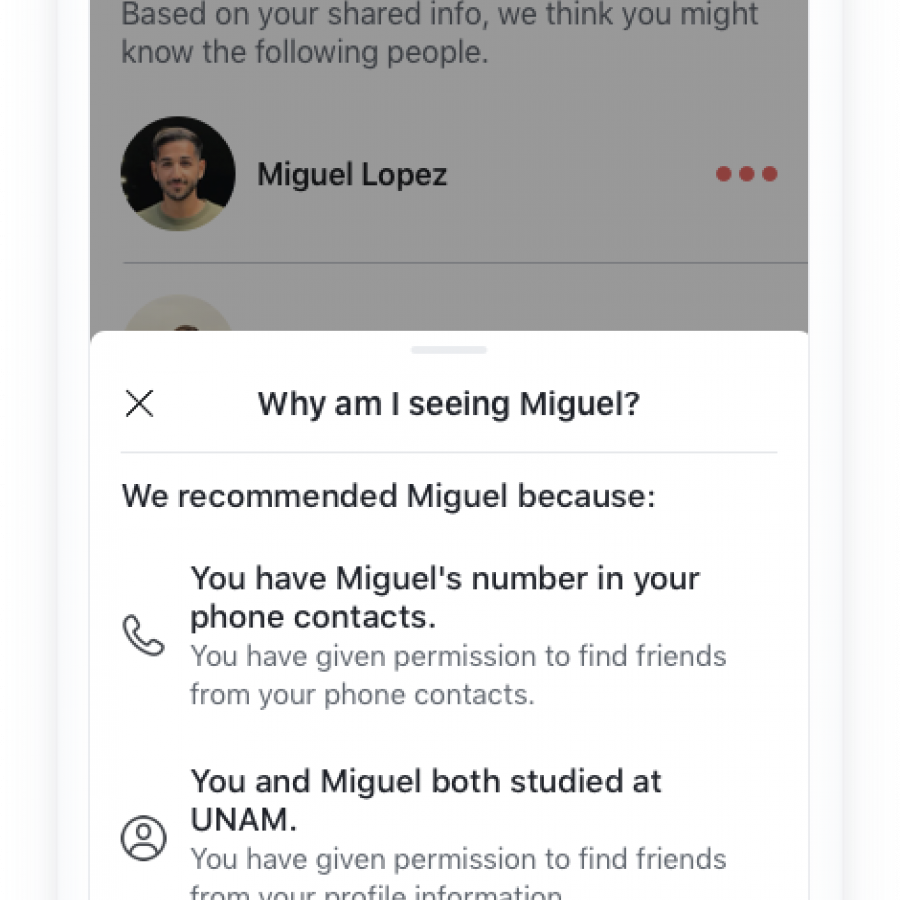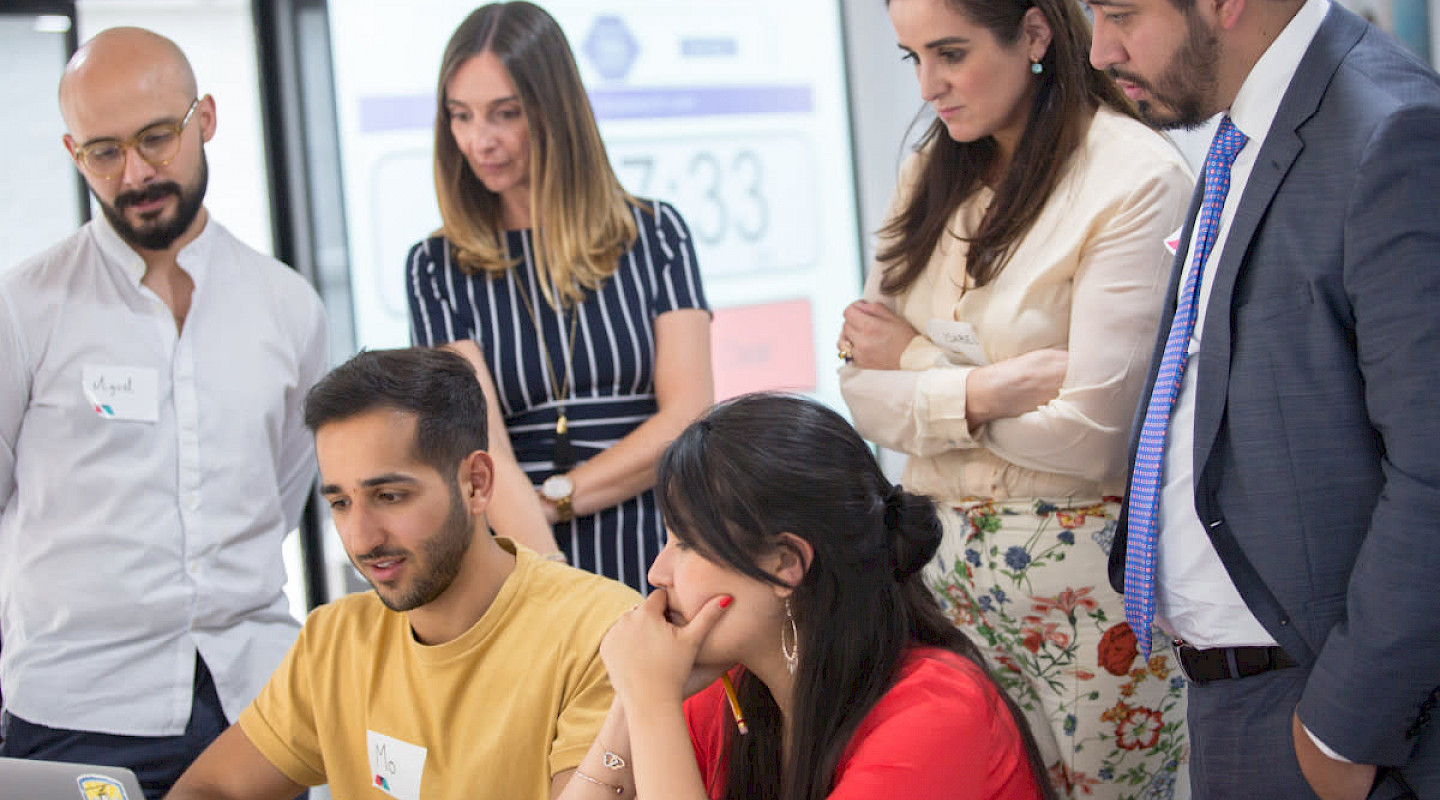How might we...
...Help people to understand why they're seeing friend suggestions & control them?
Acknowledging that people change over time is key to building experiences people both enjoy and trust over time. As their tastes, preferences and needs evolve, they might not remember consenting to something a while ago or simply might want to amend it. With this in mind, Friendlee’s social app builds an understanding of how people’s data is used to provide suggestions, offering ongoing information and control.

Friendlee is a social media app that connects you with friends through features such as sharing photos and sending money.
In order to provide the service, Friendlee is powered by some of the following data:

In social media apps, people are often given suggestions and recommendations; sometimes, they don’t know what they are based on how their data is used. People can be left wondering, for instance, how does Friendlee know what friends to suggest using the friend suggestions tool?
How might we...
...Help people to understand why they're seeing friend suggestions & control them?

Policy makers, legal experts and designers prototyping together
Control what data sources are used for suggestions
When signing up, people often give access for their data to be used across the app. People often forget they've done this or don't realise when it's being used. In order to avoid this, Friendlee gives people granular controls over their data. This feature allows them to select how friends are suggested to them, giving them complete control over their data use.
The origins of friend suggestions and other recommendations on social apps can sometime feel mysterious to people. Giving people a look under the hood and a hand on the wrench can allow them to feel better informed and more in control of their own data, encouraging a trustworthy relationship between them and the service.

Even after giving specific data access, people may forget what they gave access to and why they're seeing suggestions. Friendlee has a transparency feature that allows people to understand why they are seeing specific friends suggestions: what data sources were used and what previously given permissions it relied on. Acknowledging that people change their mind, Friendlee includes an in-context button allowing them to directly edit their privacy and data use preferences, fully empowering them.

Acknowledging that people change, and so do their preferences, is key not only for services to be compliant on the basis of informed and transparent consent, but also to ensure that the service experience remains relevant and enjoyable for people over time.
How might we build more methods to provide transparent overviews consistently across services?